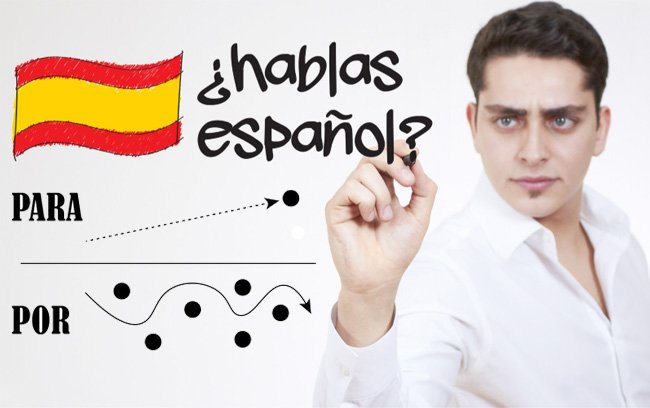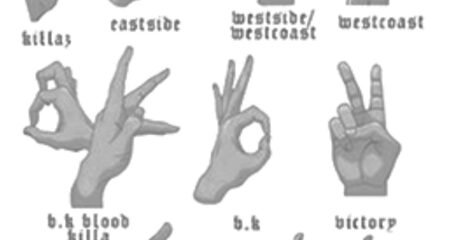Studying Por O Para? – Quizlet Answers can help you differentiate between these two prepositions which can often be confusing. They both mean “for” when translated into English, which can be difficult to understand. This discussion will explain in detail about these two prepositions including the trick to distinguishing them.

What are Para and Por?
The translation of “para” is “for” but it can also be “as for”. Using “para” in a sentence shows the purpose of something. “Por” is another Spanish preposition that describes the cause of a statement or activity.
Both are often used in everyday life. However, their meanings are different. The function of “para” and “por” can differ depending on the specific context. If it’s about the target, recipient, or purpose of the action, “para” is more relevant. For example, when giving a gift to another person. “Para” can also be used to talk about deadlines.
“Por” is more relevant for explaining the cause or reason for a particular action. For example, when explaining something that was done because of a certain person, it is necessary to use “por”. Similarly, “para” can be used to explain time, but “por” is more about the duration of time.
For example, it describes someone who is in a certain country for a few weeks. It can also be used to describe traveling to a certain place like “por el parque” which means through the park. So, there are quite a variety of cases that use these two prepositions.
Understanding the Difference Between Para and Por
Want to learn more about Por O Para? – Quizlet Answers? This time we will discuss how these two prepositions are different. Unlike “por”, “para” refers more to what the result or goal is. When it comes to “por”, it’s more like the basis of the process or why the process is happening.
To make it easier to understand both, check out the points below:
1. Travel and Movement
In discussing travel or movement, we can easily distinguish “para” from “por”. “Para” is synonymous with a destination, like a destination when traveling. So, “para” doesn’t describe how you walk to that destination. For example, in “Voy para Hawaii”, the sentence explains that you are going to Hawaii.
In contrast, “por” in the context of travel means how to move or travel. For example, to go to Hawaii, you need to take a plane, “por” can be used in that context.
2. Impact and Causes
Another Por O Para? – Quizlet Answers is about the connection of these two words with causes. “Para” can define the effect of what the subject is doing while “por” explains the reason or cause of the subject doing it. If something is done because of a certain person, “por” can be used for that.
3. Time
Both are commonly used in describing time. To describe a specific action that occurs over time, “por” can be an appropriate preposition. “Por” can be used to show how long something is done. Similarly, if an activity is repeated over an indefinite period, you can use “por” for that.
Examples of activities that get well with “por” are things like eating lunch, taking a shower, doing homework, and sleeping. If you want to use “para” for time, it’s more about future time and deadlines. For example, if you need to complete a project for next month, “para” can be used for that.
Which is Used More Often, Para or Por?
Learning Por O Para? – Quizlet Answers it’s also better to understand how often they are used. “Para” is often used in everyday speech like para que, para ti, and para siempre. But “por” is more commonly used than “para”.
There are more functions of “por”. The scope of usage of “por” is also wider in many situations and conditions. “Por” is usually used to show time duration, traveling to a certain place, and reason. Since every action has a cause or reason, “por” is used very often.
Many people also describe the duration of time when doing something, staying somewhere, vacationing, and so on. “Por” can be used to describe that duration of time. The same goes for the process of traveling to a place, such as walking through a lobby.
If we look again, the use of “para” tends to be more specific. For example, to indicate a deadline instead of a duration of time. “Para” is also used to describe the recipient and the purpose. In the context of gift-giving, “para” refers to who the gift is given to.
Since time duration is more common than the deadline, “por” tends to be more commonly used than “para”. “Para” has fewer functions than “por” so “por” may be used more often in daily life. Likewise, in documents or writing, “por” is used more often than “para”.
Although “por” is more common, it is important to understand that the frequency of use of both depends on the writing and the type of conversation. If the conversation is more about the recipient or destination, “para” may be used more often.
Besides understanding Por O Para? – Quizlet Answers, you’d better get used to practicing these prepositions as well. The more you practice using them in real conversations, the more you’ll be able to use them with precision and naturally.
Common Mistakes
One of the interesting topics in learning Spanish is Por O Para? – Quizlet Answers. There are some common mistakes in learning these two prepositions. Questions about “por” and “para” come up often but some may be tricky or confusing.
Since they are similar in English but the context of use is different, many students are confused. Usually, when the exam question is about choosing between the two to complete a sentence, it is quite confusing. For you to succeed in the exam, check out the common mistakes to avoid below:
Mistake the focus of both
Although similar, “para” and “por” have different focuses. The focus of “para” is on the recipient, the result, and the goal. While “por” focuses more on the process, reason, and duration. Students often choose the wrong one because they don’t understand the context of the sentence and the relevance of each preposition focus. Students can get it wrong when using “para” for reason and “por” for purpose.
Equalizing the two in terms of time
Time is one of the crucial factors in distinguishing between “por” and “para”. In describing time, “para” tends to be used to explain deadlines. “por”, on the other hand, can be used more flexibly, especially when it comes to time duration. So, don’t use “para” to explain time duration!
Using “por” for travel destinations
In sentences that convey travel activities, “para” and “por” have different functions for such sentences. “Para” should be used to refer to the destination of the trip. In contrast, “por” refers to the process/procedure of traveling or what to go through to get to the destination. Some students may get confused and use “por” to describe the destination.
Only memorize, but lack understanding
Would you rather not just memorize Por O Para? – Quizlet Answers. One of the common mistakes in learning these prepositions is memorization. Instead of just memorizing, understand the meaning of “para” and “por” so that you can answer questions in the exam naturally and correctly. Such questions often test how students understand the overall concept.
If the wording of the question is changed from the usual, students may find it difficult to answer if they have only memorized it before.
Not aware of fixed expressions
Another mistake is not equating fixed expressions with general rules. Fixed expressions can’t just be changed so they should be left as they are. In Spanish, fixed expressions include para siempre, por supuesto, and por favor.
Not careful in distinguishing between reason and purpose
Reason and purpose are very crucial topics in this discussion. From reasons and purposes, we can even learn “por” and “para” more easily. If in the exam you find a question that is more inclined to reason, you can use “por”.
While if the question is about goals, “para” is more likely to be used.
Useful Tips
When learning Spanish or taking a Spanish exam, questions about the difference between “por” and “para” can be a challenge. To make it easier for you to understand Por O Para? – Quizlet Answers, here are useful tips for you:
1. Learn the Basic
The basic thing you have to learn is the focus on meaning. “Por” focuses on the process, reason, and duration of time. In contrast, “para” is about the result, the recipient, and the purpose. If you’re confused by the question, go back to basics first.
2. Be careful in reading the sentences
If you don’t read the question sentence carefully, you can often choose the wrong answer. Read the sentence slowly and don’t be pressured by the exam time limit. Understand well the direction of the sentence, to the reason or purpose.
3. Don’t forget fixed expressions
There are not too many fixed expressions in Spanish so you can memorize them easily. The most common ones are para siempre, por supuesto, por fin, por favor, por ahora, and others. There are many other fixed expressions but as you use them more often, you will get used to them.
Sometimes fixed expressions may appear in exam questions. It is better to not only focus on the general rules but also make sure the fixed expression is unified.
4. Understand the question pattern
Another aspect that you should learn is the pattern of questions in a typical exam. If you understand the pattern and familiarize yourself with it, you can take the exam more efficiently.
5. Practice in other contexts
The last tip is to try to explore other contexts be it around travel, time, reason, and so on. Don’t just practice on similar subjects or objects. Try practicing making sentences with “por” and “para” that are different from your usual ones.
Although it is quite challenging because it is confusing, mastering these prepositions is not impossible. Just make sure you practice the questions often, especially the ones that come up in the exam. Por O Para? – Quizlet Answers discussed this time can help you succeed in the exam.
Transitioning from English to Spanish is not easy. Spanish is unique and it’s not just about “por” or “para”. In Spanish, objects can have genders that describe both feminine and masculine elements. For example, la libro (book, feminine) or el mesa (table, masculine).
Important Notes on the Difference Between Para and Por
Understanding prepositions including Por O Para? – Quizlet Answers is important for Spanish exams. Both of these words can be used in the same situation because the translations are the same. However, they can convey significantly different things in Spanish.
Here’s an important note that you can keep so that you don’t confuse “para” and “por”:
- “Para” is about the final destination
- “Por” shows the reason for doing something
- “Para” can be used for recipients, opinions, deadlines, and destinations
- “Por” can be used for rough locations, means of communication, causes, and movements
- Infinitive verbs usually follow “para” especially when expressing purpose
- Both can be followed by pronouns or persons. “Por” conveys that this person is the reason for doing something, while “para” indicates the recipient or the one receiving something.
- To refer to time, “por” can be used even if the focus is on frequency, the passage of time, or duration. “Para” is commonly used to describe a deadline.
So, that’s all about Por O Para? – Quizlet Answers. Hope you found it useful!
FAQs
What is the difference between “para” and “por”?
“Para” means “for”, used to explain the reason for the activity. “Por” means “because” to talk about why something happened.
Which is correct, gracias “por” or “para”?
Gracias “para” is one example of an incorrect phrase. Gracias por means “thanks because” or “thanks for”.
What’s the trick for “para” and “por”?
You can remember that “para” is for purpose, while “por” is for reason. Use “para” only to convey the purpose of an activity.
What does por favor mean?
In colloquial Spanish, por favor is one of the most popular phrases. The meaning of por favor is to ask someone else for a favor.
What’s the difference between por favor and gracias?
Por favor is a sentence to seek or ask for a favor. Gracias means to acknowledge something positive or say thank you.
Why understand “para” and “porque”?
Is it important to learn Por O Para? – Quizlet Answers. This is one of the essential understanding bases for learning Spanish, especially for understanding sentences with a reason or purpose.
AUTHOR BIO
On my daily job, I am a software engineer, programmer & computer technician. My passion is assembling PC hardware, studying Operating System and all things related to computers technology. I also love to make short films for YouTube as a producer. More at about me…



















